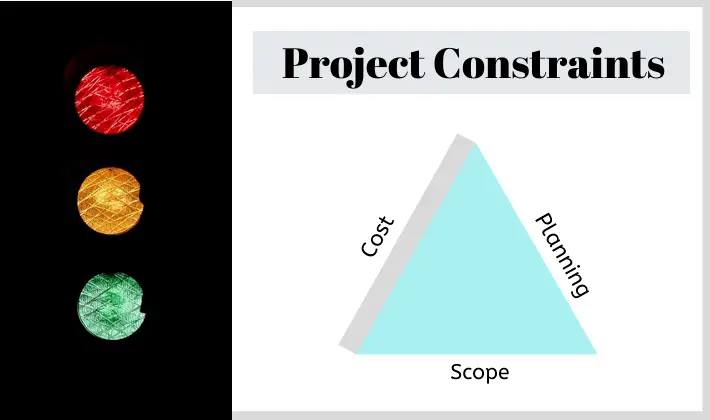PERT Formula is one on the ways for doing three point estimation. It calculates expected duration by finding the weighted average of three different estimates viz. Optimistic (O), Pessimistic (P), and Most Likely (M).
E_PERT=(O+P+4×M)/6
The three point estimation can also be done by using simple average formula.
E_SA=(O+P+M)/3
PERT (Program Evaluation and Review Technique) is based on beta distribution technique whereas simple average is based on the triangular distribution technique. The above mean formulas are close approximations of the beta and triangular distribution calculations.
Historically, 3-point estimation originated from PERT. Apart from the duration estimation, these formulas can be used for doing cost and resource estimation also.
Let us understand the definitions, differences, and other details of 3-point estimating methods using a few examples.
Note: If you are preparing for the PMP exam then you should remember that the PMBOK Guide does not use the term PERT – it uses beta distribution.
1. PERT Formula – Three Point Estimating Using Beta Distribution
PERT formula in three point estimating method uses 3 different estimates of a task. It calculates statistical mean of these values to find out the expected value of the task.
The 3 values that are used to determine the expected value are:
- Optimistic Value (O): best case scenario
- Pessimistic Value (P): worst case scenario
- Most Likely Value (M): realistic scenario
PERT formula calculates a weighted average (mean) of the above three values.
E_PERT=(O+P+4×M)/6
The above weighted average formula is an approximation of the beta distribution equation.
Why do they have 4 Weights for M in PERT Formula?
PERT formula is based on probability theory and statistics. Specifically PERT is based on beta distribution.
PERT was initially developed by US Navy to take care of scheduling uncertainties. The formula mentioned above is a close approximation of mean found by the beta distribution equation.
PERT Example and Calculation
Let us consider an example to see how PERT formula works. Let us assume that we have to estimate the time it takes to go from point A to B. There could be 3 different scenario for going from point A to B.
Optimistic Scenario – Roads are free of any traffic congestion and we will not encounter any red signals.
Pessimistic Scenario – There are serious traffic bottlenecks (may be due to a major accident) and we will have to make unscheduled stops (may be due to vehicle breakdown).
Most Likely Scenario – There would be regular traffic conditions.
Let us assume that we evaluated analyzed the three scenarios and arrived at the following 3 estimates:
- Optimistic Value (O): 45 minutes
- Pessimistic Value (P): 225 minutes
- Most Likely Value (M): 90 minutes
Putting these values in the formula, we get
E_PERT=(45+225+4×90)/6
E_PERT=105 minutes
It essentially means that, in most cases, the trip will take 105 minutes or less.
In order to improve the accuracy further, you can apply standard deviation to determine a range of estimates. You can read my article on PERT and standard deviation to know more.
2. Simple Average Formula – Three Point Estimating Using Triangular Distribution
In this case, the mean of three estimated values is determined by the following formula.
E_SA=(O+P+M)/3
Example and Calculation
Let’s use the same three values from the above example and put them in the triangular distribution formula.
E_SA=(45+225+90)/3
E_SA=120 minutes
It essentially means that, in most cases, the trip will require 120 minutes or less.
In order to improve the accuracy further, you can apply standard deviation to determine a range of estimates. You can read my article on triangular distribution and standard deviation to know more.
Why is Three Point Estimating Required?
Three point estimating is useful for mitigating project risks.
Risks are inherent in every project. Many of the risks occur due poor estimation. 3-Point Estimate helps in reducing such project risk.
In single point estimating, a single value of task estimate is determined, which could be inaccurate for the complex tasks.
The accuracy of a single point estimate can be improved by finding three different values. These values helps us in establishing a range, which reduces the estimation risk and improves confidence.
You would have noticed that PERT estimate was more closer to ‘Most Likely’ value. Some Project Managers believe that PERT Estimate yields better results that triangular distribution but I am yet to see a definitive research suggesting this.
Final Thoughts
Estimation is one of the most basic concepts of Project Management. In fact poor and improper estimation is one of the main causes of challenged projects.
There are many ways for finding out estimates. Some of these estimation techniques are specific to an industrial domain like software size estimation techniques while other techniques can be applied to any kind of projects (or daily life activities). Three point estimating should be used for tasks that are fairly complex in nature and a single point estimation can go wrong.
Single point estimating can be done by using analogous estimation or parametric technique.
3-point estimation can be used for estimating duration, cost or number of resources required for a task. A task could be a work package or activity or even an entire project.
As a next step, you should apply standard deviation on PERT formula and understand how PERT can be used along with CPM. PERT and CPM (Critical Path Method) are often used together to determine a less risky project schedule.
A note on PMP® Exam
PMP exam has many formula based questions. Some of these questions are based on 3-Point Estimate. Many of these questions can be solved by using either PERT formula or Simple Average formula. Usually these questions are relatively easy to solve. The underlying concept, itself, is very simple. However, I have observed many PMP Aspirants get confused by this topic. During PMP Exam training, many students ask questions like “Is 3-point estimation same as PERT?”, “Why are there 2 different formulas for arriving at 3-Point estimate?”, “Which formula should be used to solve the questions in the PMP exam?” et. el.
I believe this confusion comes mainly due to the different terminology used by different Project Management authors. My humble suggestion is that if you are a PMP® Aspirant then you should follow terminology from PMBOK Guide. All others sources of the information like books, websites and blogs (including this one) should be read with a bit of skepticism. You should follow other sources only if you find the information contained in these sources is conformant with the PMBOK Guide.
I believe, both PMP aspirants and Project Management practitioners should use PMBOK Guide to understand Project Management Terminology. PMI is trying to standardize Project Management terminology. Many experts from various different areas have contributed content for PMBOK Guide. The Guide is thoroughly reviewed before it is published. It is also updated with current trend and latest developments in Project Management.
Over To You
Which formula do you use to determine 3-Point Estimate in your projects? Why do use one method over the other? Please leave a comment.
PMP Exam Formulas
I have also compiled a PMP Formulas Cheat Sheet. It contains 45 formulas and 57 abbrviations. It will help you in your exam prep. It is the best and most comprehensive cheat sheet based on the PMBOK Guide 6th edition. You can download it free of cost for your studies.
If you are looking beyond a cheat sheet, then I would suggest you to buy detailed PMP Exam Formula Study Guide by Cornelius Fichtner. It contains detailed explanations of all the formulas along with examples and 105 practice questions.
Disclosure: This article contains affiliate links - it means that, if you buy from any of these links, then I will receive a small commission that would help me in maintaining this blog for free. However, for you, there is no extra cost. I recommend only those products that I believe will definitely help the certification aspirants.





![45 PMP Exam Formulas Cheat Sheet: Free Download [2024]](https://www.pmbypm.com/wp-content/uploads/2016/01/pmp-formulas-cheat-sheet.jpg)



PERT is one type of 3-point estimating. PERT assumes that the underlying distribution is a beta distribution. The “simple average” that you mention assumes a triangular distribution.
Thanks for enabling me to understand these strategies.
True. Triangular dist.
simplified…easy to understand…thanks !
I get it – Thanks!
Great explanation, thank you.
Thanks Paul
Thank you so much! Awesome explanation and easy to understand.
Thanks Patty.
Unquestionably believe that which you stated. I say to you, I certainly get irked while people consider otherwise, that they just do not know about. Will be back to get more. Thanks
Thanks Tara
i have read ur article but i m not understanding how did u calculated confidence level.
Hi Sonali, Confidence level is derived from probability theory. You can search for “z score tables” to determine the Confidence level (probability values).
Fabulous, what a website it is! This article provides helpful information to us, keep it up.|
Thanks MArinir
If we have to select one project out of three projects. Which project will we select by using 3-point estimate? We have O,P,ML estimated cost for all the three. So which project will have less risk?
Hi Qurban,
3-point estimation is not a Project Selection Method. You should read about various project selection methods like IRR, NPV, BCR etc.
BR
I have to agree with your statement.
Thanks John
How do you calculate the pessimistic and optimistic values??
Hi Hugh,
Most of the time, PMs tend to go with most likely estimates. But projects have inherent risks – both threats & opportunities. We should understand & evaluate these risks while estimating optimistic & pessimistic values respectively.
Just remember the English meaning meaning of Optimistic & Pessimistic before doing the estimation. Pessimistic estimation would mean that almost everything will go wrong while Optimistic estimation would mean that everything will go right.
Hope it helps.
Hi Praveen,
A. BOTTOM-UP ESTIMATING
1. Bottom-up estimating is at activity level estimating and roll-up for budget.
B. TOP-DOWN ESTIMATING
2. Analogue Estimating
3. Parametric Estimating
4. Heuristic and learning curve estimate (Though not in PMBOK)
C. THREE-POINT ESTIMATING
a. Simple Average
b. PERT Calculations
These estimates are for improving estimating accuracy and reducing risks.
They improve single-point estimate.
They can be used for:
c. Activity level estimate
d. Whole project level estimates
My question is whether THREE-POINT Estimating can be categorized as top-down or bottom-up estimating?
The ans is neither. top-down and bottom-up can be used for any form of estimating. basic forms of estimating are – expert judgement, analogous (in old literature it is incorrectly called top-down), and parametric.
hi can i ask what the meaning of 4 in the mean formula? why most likely time must multiply by 4
Hi Zaitun, As written in the article, the formula is a close approximation of Mean found by Beta Distribution.
For more on beta distribution, you can check – https://en.wikipedia.org/wiki/Beta_distribution
BR, Praveen.
Awesome issues here. I am very glad to see your post. Thank you so
much and I’m having a look ahead to contact you. Will drop a mail
How to know which formula to use between the simple average and PERT?
Hi Chandra, Just follow your org. guidelines. BR, Praveen.
Im wondering what is the best way for accounting in the variation members of a team may have in their views of the there estimates. (Optimistic, Pessimistic, and Expected). If 10 people each submit these 3 estimates baed on their own judgement and experience, on one hand just averaging the 10 inputs for each should make them better estimates, but surely there is more uncertainty to carry forward if there is wide variation among those 10 answers for, say, Most Likely time, than if almost everyone says the same thing.
Greg, When three points estimatimating is taking care of uncertainity then why would you want to take three different esitmates from 10 different people? Have you experienced this? If yes, what was the situation?